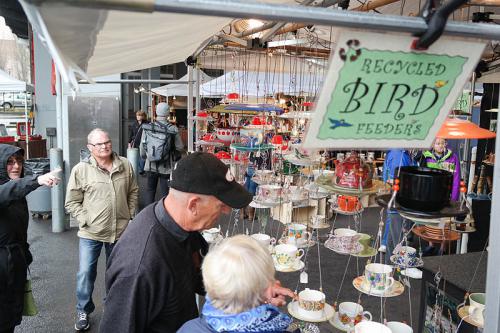Make backyard bird feeders with youth
Consider making bird feeders with your 4-H club or youth group. It’s a great project for youth that they’ll enjoy all winter, and birds will love it!

Winter bird feeding is a popular activity for many that requires a small amount of time to prepare for proper feeding of our feathered friends. The beautiful fall weather may have lulled us into feeling as though we are having an extended summer. However, winter will arrive here in Michigan soon and any preparations should be done now. Making bird feeders is a great activity for youth to participate and provides a great sense of accomplishment and later enjoyment. Help youngsters understand bird behavior and feeding patterns so they can make decisions about what feeders to make.
Many bird feeders can be built easily and with minimal cost. Often, a feeder can be made from items you may already have or are readily available. Some feeders are made with recyclable materials such as plastic bottles and glass jars while others are made with items easily obtained from thrift stores, such as wooden spoons and plates. There are even feeders that can be made from old shoes, logs, scrap wood and even food!
First, determine what type of birds you want to feed. Some birds like finches, chickadees and nuthatches will feed from tubular feeders and will pick seeds from small openings. Others like blue jays, grosbeaks and cardinals will feed from open containers. Having a variety of feeders will invite various birds and provide a greater diversity of viewing enjoyment.
 Seed type is another consideration. Birds that feed from tubular feeders with small openings will readily take to thistle or niger seed. It is a bit expensive, but the small beaked birds love it. Millet is enjoyed by many ground birds, but is often picked through in mixtures to get at more desirable seeds. Sunflower seeds are a good overall choice, as they are preferred by most species of birds. Black sunflowers are smaller than striped and fit nicely in most feeders. Regardless of the seed chosen, keep all seeds dry as moisture can invite mold and fungi that can be harmful to birds.
Seed type is another consideration. Birds that feed from tubular feeders with small openings will readily take to thistle or niger seed. It is a bit expensive, but the small beaked birds love it. Millet is enjoyed by many ground birds, but is often picked through in mixtures to get at more desirable seeds. Sunflower seeds are a good overall choice, as they are preferred by most species of birds. Black sunflowers are smaller than striped and fit nicely in most feeders. Regardless of the seed chosen, keep all seeds dry as moisture can invite mold and fungi that can be harmful to birds.
Wooden feeders are a good choice for youth that enjoy working with wood, and they are long lasting and attractive. Wooden feeders can be a simple hanging tray or constructed with sides and a roof. Glass jars, cups, milk cartons and plastic bottles can all be modified to be used as a bird feeder. Also, don’t forget to try making some feeders that are completely edible by themselves. Bagels, cereal, popcorn and fruit are all enjoyed by various types of birds. Even empty oranges and grapefruit can be filled with bird’s favorite foods. Providing different types of feed will attract a wider variety of birds, adding to greater enjoyment when watching.
Above all, let youth make choices and have a direct hand in creating feeders. The enjoyment of watching birds feed will have far more significance to youth knowing they built the feeder. Youngsters will also be more apt to fill, clean and manage the feeders when they have ownership in the construction.
Bird feeder construction, seed choice and watching makes an excellent youth activity that can be enjoyed by the whole family and others. It is an excellent project, gift idea and hobby.
Michigan State University Extension encourages participation in new experiences that are safe and expose youth to science involvement with 4-H science: Asking questions and discovering answers. Please contact me at baumga75@anr.msu.edu for ideas on spending time outdoors with youth.



 Print
Print Email
Email


